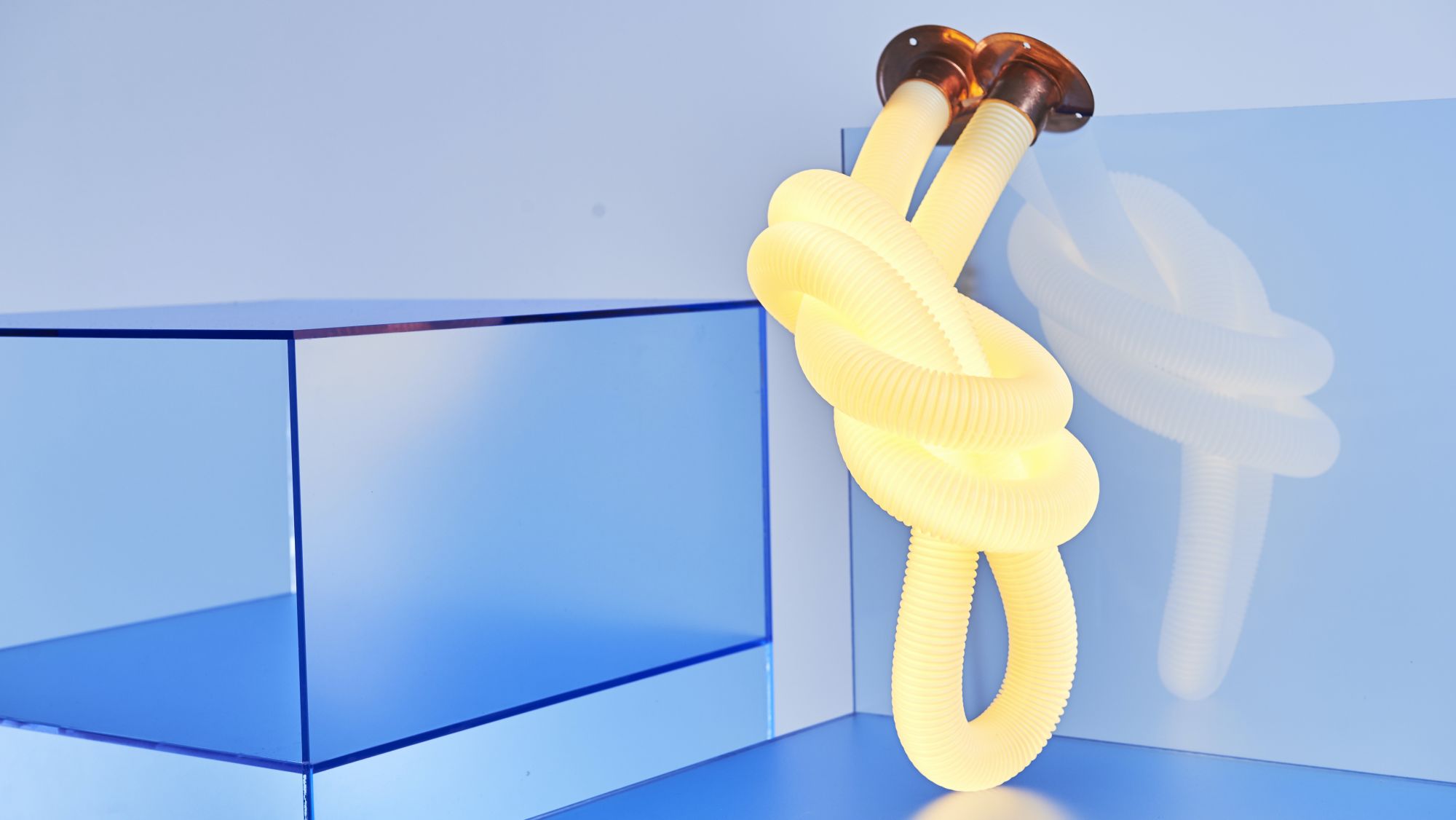Southeast Asia has a waste problem. The region accounts for half of the 10 countries in which the most plastic pollution leaks into rivers and seas, according to the World Bank. And in addition to their own production, countries like Malaysia and Vietnam are among the leading importers of consumer waste from the developed world.
Perhaps, then, it is little surprise that recycling, reusing and repurposing were major themes at this year’s Singapore Design Week.
Across the 10-day program, which concluded Sunday, local and international designers grappled with environmental threats — and the role design can play in alleviating them. Many of the most innovative examples of upcycling were found at the event’s Find Design Fair, which spotlighted the work of young creatives from around the region.
The showcase, dubbed Emerge, was broad in scope, though curator Suzy Annetta identified a strong “trash to treasure” theme.
“There’s really quite a broad diversity, in terms of what materials designers are using and where they’re salvaging them from,” said Annetta, who is also founding editor of Design Anthology magazine. “Some of it is post-consumer, some of it is post-industrial and some of it is agricultural.
“Designers are, by nature, inquisitive — and they are problem solvers,” she said, adding: “There’s a high level of awareness of what the issues are, and of doing something small, in their own way, to try and combat them. And I think we’d all like to see these (ideas) be scalable.”
Here are seven eye-catching products and prototypes from across the Singapore Design Week program.
Cow dung accessories

Cow dung may be a natural material, but it is also responsible for polluting water and emitting gases like methane and ammonia. Hoping to counter the environmental impact of farming in Indonesia’s West Java province, designer Adhi Nugraha developed a method for reprocessing the waste into durable household appliances.
A team led by Nugraha, who is also a teacher and researcher at the Bandung Institute of Technology, cleans the dung with water, which in turn removes the smell. It is then combined with scrap plastic and wood glue in a mold before being dried at low heat until hard.
So far, the project has resulted in striking lamps, stools and even home speakers. The manufacturing process is simple and consumes very little energy, meaning that villagers in the area may soon be able to participate in — and generate income from — the items’ production.
Washing machine tube lamps
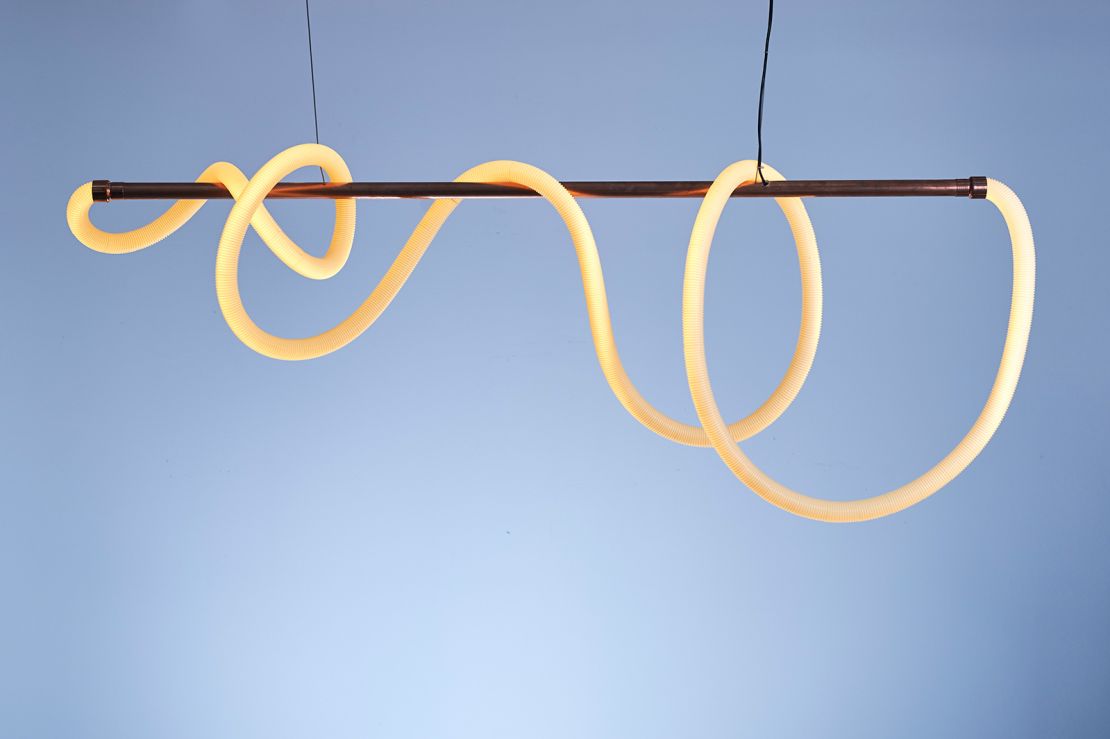
Singaporean artist and designer David Lee turns washing machine ducts into striking floor, table and ceiling lamps by inserting LED strips into the flexible hoses before bending them into unique shapes. The resulting sculptural forms (also pictured top) often take the form of what he calls “scribbles,” which can be wrapped around ceiling fixtures to give the appearance they are floating above the room.
The lamp series, called “Ugly Ducting,” is, for now, a collection of prototypes in development.
Plastic waste furniture
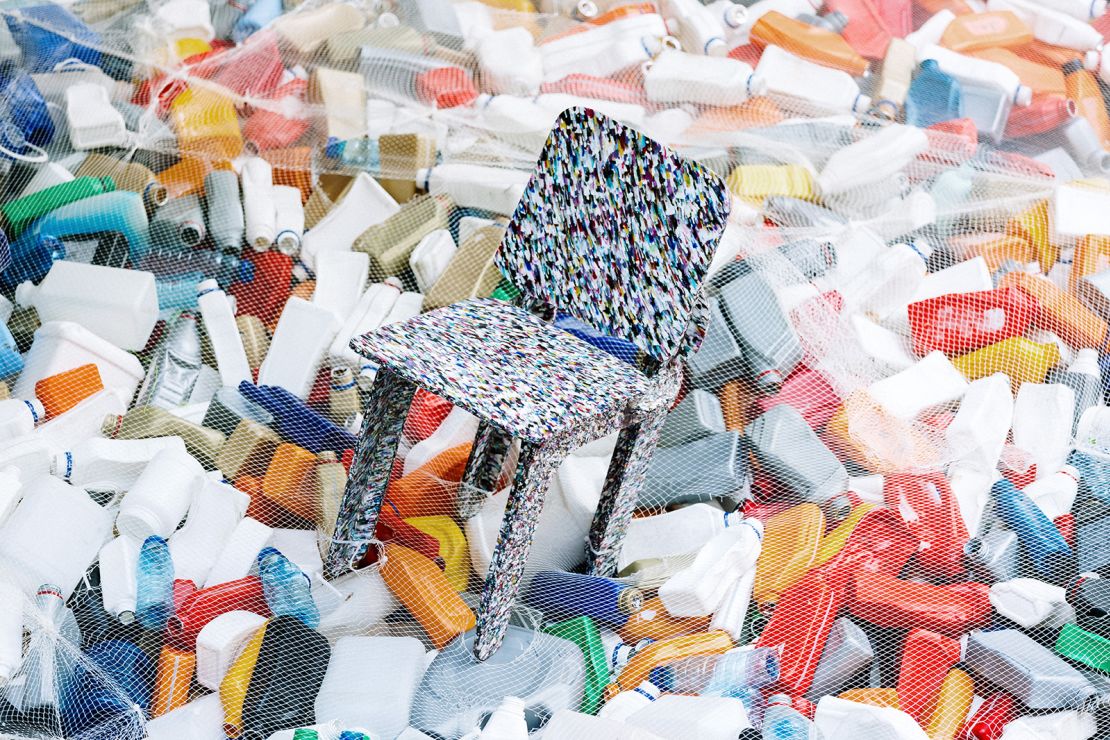
Realizing that they were both culprits and victims of pollution on the Indonesian island of Bali, the owners of a popular beach club and hotel, Potato Head, have embarked on a six-year “zero-waste” quest. Working with various artists and designers, including Dutch architecture firm OMA, the company reassessed each part of its operation and co-developed processes and products that help reduce its footprint.
The exhibition “N*thing is Possible,” opened as part of Singapore Design Week, charts this journey. Among the displays are examples of beach club furniture made using materials recovered from the surrounding coastline, including deck umbrellas made from palm tree bark and chairs produced from plastic trash. The mission is ongoing, and while the company has drastically reduced its waste output, the exhibition is also refreshingly honest about the work that remains.
Dog hair rugs
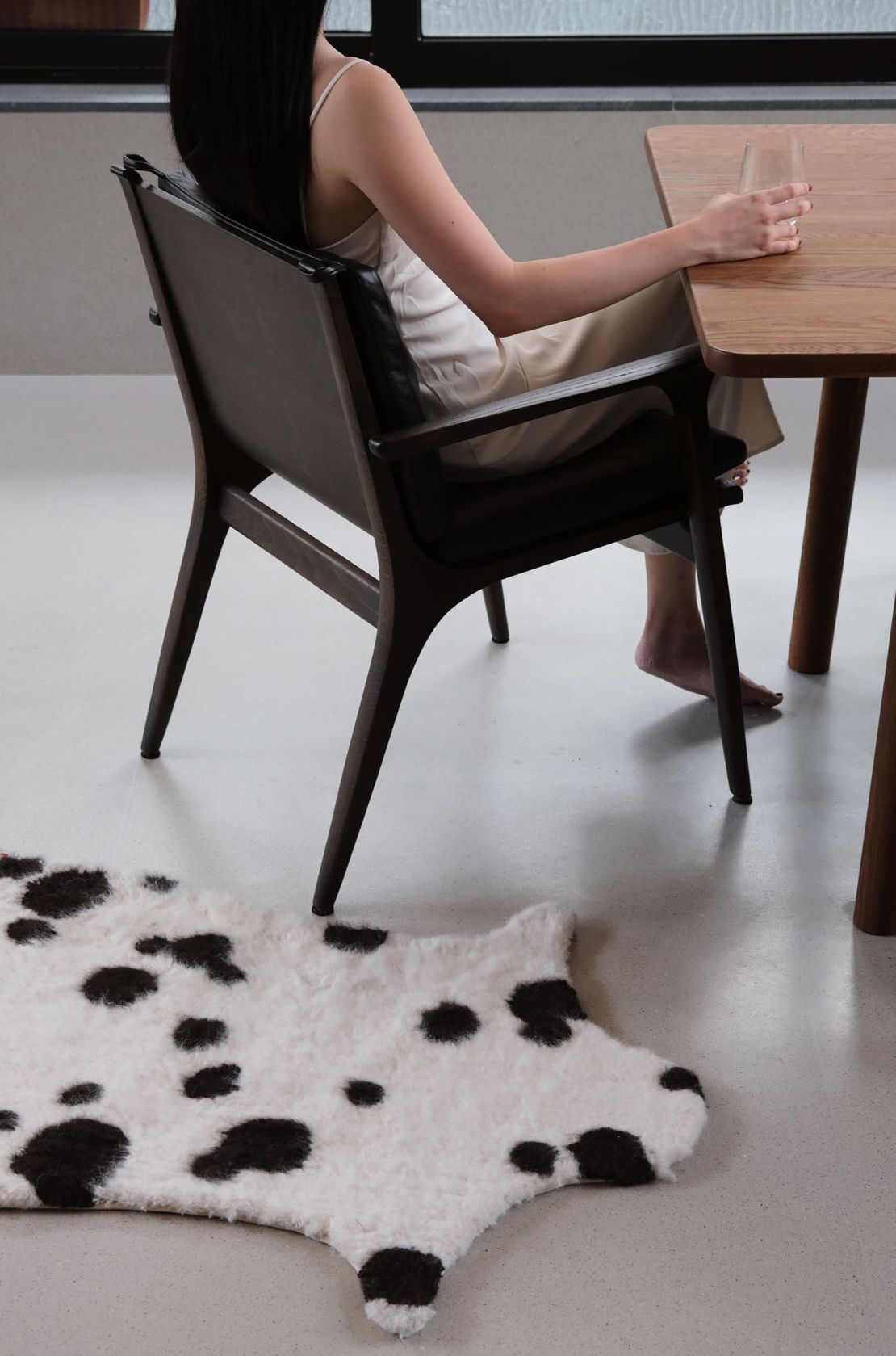
On average, Singapore’s dog grooming services each cut off over two pounds of fur a day, according to local designer Cynthia Chan. Instead of letting it go to waste, the recent graduate used techniques including felting, tufting, knitting and compression molding to turn the leftover hairs into “pelts” that can be used as household rugs.
Dog fur may not be a major pollutant but her natural fur products offer a sustainable and cruelty-free alternative to synthetic ones. Chan hopes to “further investigate the raw, expressive qualities of these fibers,” she wrote of the project.
‘Flexible’ sawdust
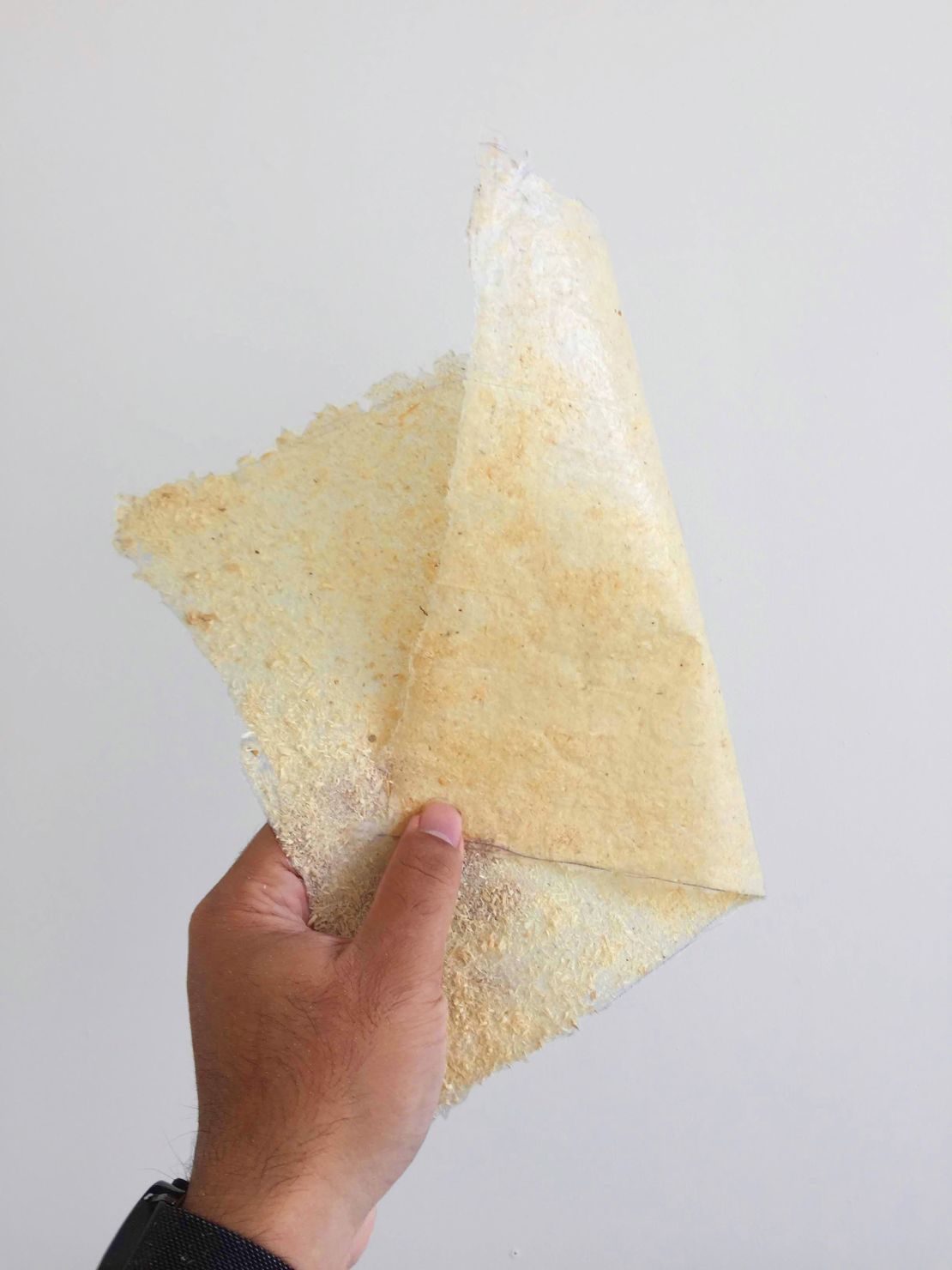
Indonesian designer Denny R. Priyatna used his spot at Singapore Design Week to showcase a table and chair made using traditional carving and weaving techniques. What’s equally impressive, however, is what he did with the leftover sawdust.
Mixing different wood types and adhesives together, the industrial designer found that using a small amount of glue, rather than resin, created a more pliant, paper-like material he calls “flexible” sawdust. He then layers the sheets to varying thicknesses, or combines them with leather scraps from his workshop, to produce accessories including pen holders, vases and other containers.
Coffee and waste paper table set
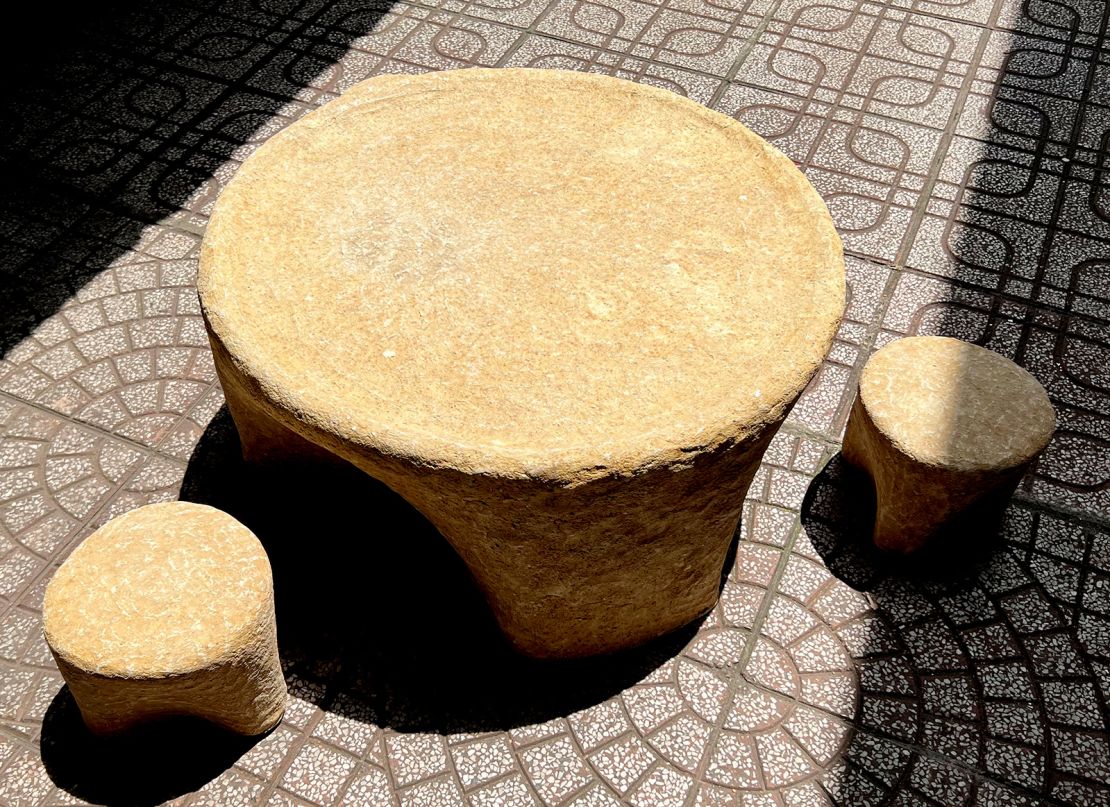
Cooped up indoors during the pandemic, Vietnamese designer Phuong Dao turned to what was around her: newspaper scraps, cardboard and old coffee grounds.
When compressed and combined with an adhesive, these waste materials can be used to build sturdy furniture. Take the designer’s low table and chair set, which she named “Cà Ràng” after a kind of Vietnamese stove that families have traditionally gathered around.
“It was the place to socialize, share stories and warm by the fire,” she explained over email. “Nowadays, families often gather in the living room so I want to transfer that spirit into this space.”
Factory waste fan
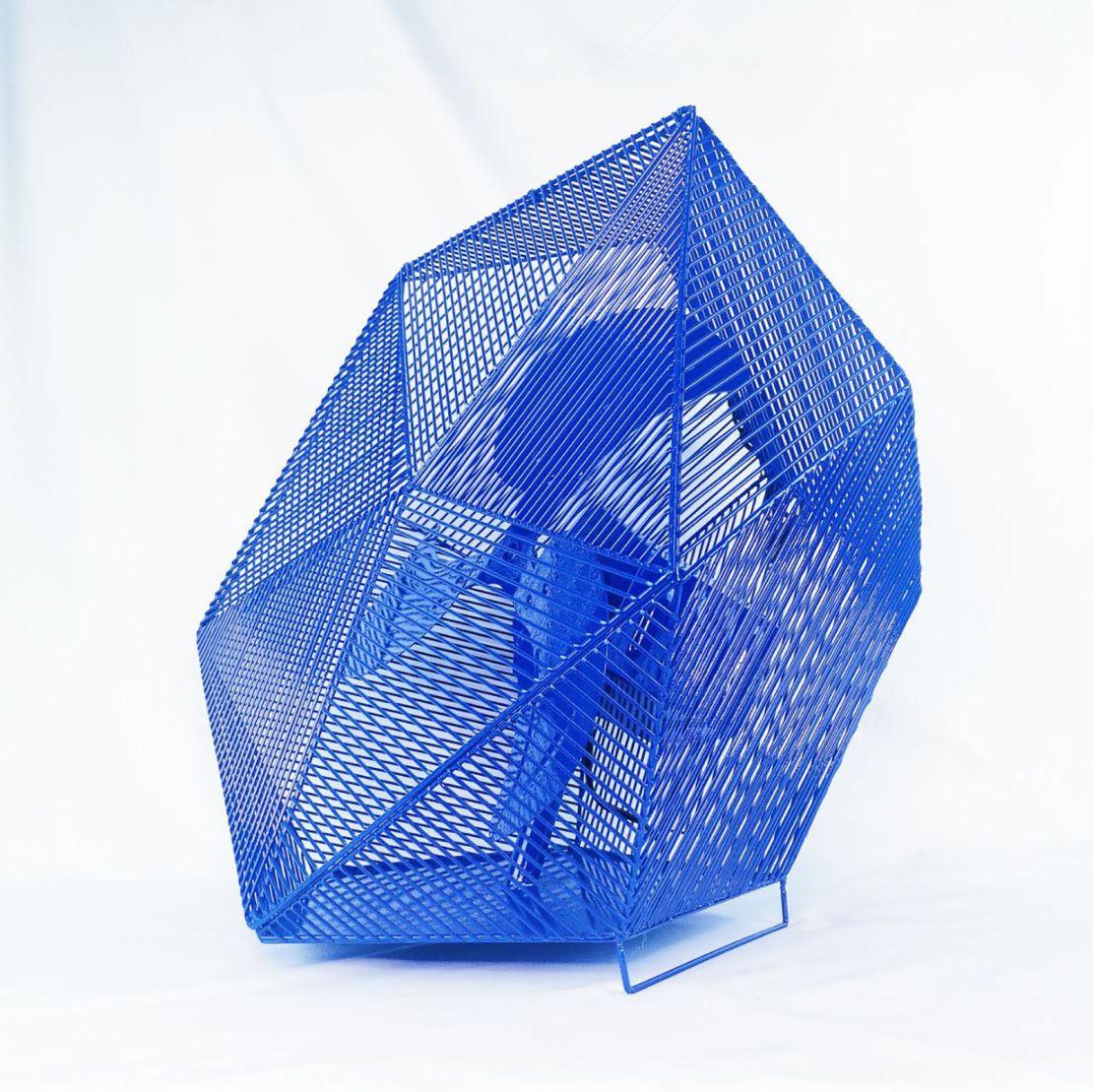
During the pandemic, Philippines-based designer Joseph Rastrullo said he was approached by friends working at various industrial facilities — including air conditioning manufacturers, truck factories and electrical wiring and construction companies — asking what they could do with their waste materials. “I told them, ‘Give me whatever scraps you have and I’ll create something,” he explained.
The result is a range of high-end, bespoke design pieces, including an elegant drinks cabinet and a geometric electric fan made from metal wire offcuts. The latter can take up to three weeks to make by hand, though Rastrullo is now looking for ways to mass-produce the items.
